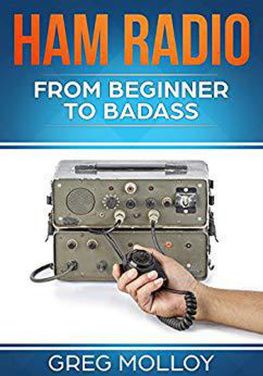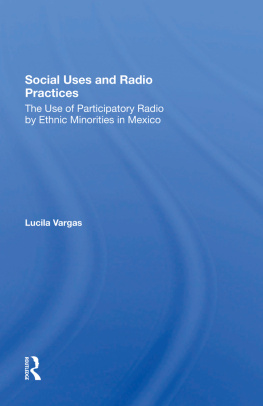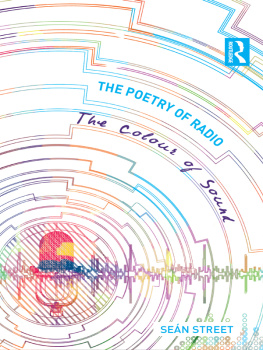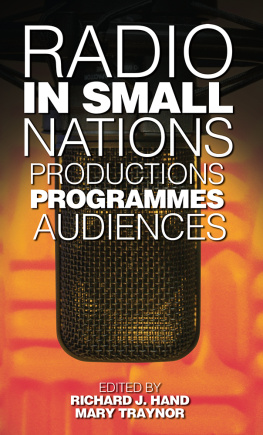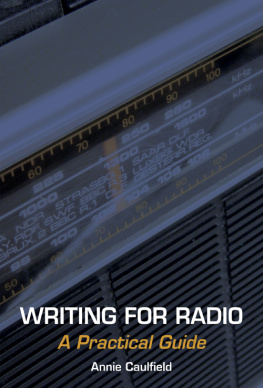Thank you for buying this ebook, published by NYU Press.
Sign up for our e-newsletters to receive information about forthcoming books, special discounts, and more!
Sign Up!
About NYU Press
A publisher of original scholarship since its founding in 1916, New York University Press Produces more than 100 new books each year, with a backlist of 3,000 titles in print. Working across the humanities and social sciences, NYU Press has award-winning lists in sociology, law, cultural and American studies, religion, American history, anthropology, politics, criminology, media and communication, literary studies, and psychology.
ACKNOWLEDGMENTS
Many people have been instrumental in bringing this volume to fruition. In addition to the patient and hard-working contributors, we would like to particularly thank Tom Abercrombie, Faye Ginsburg, Steve Feld, Fred Myers, Harald Prins, and Bambi Schieffelin, and as well as our editor, Jennifer Hammer, and two anonymous reviewers at NYU Press for their help in shaping this volume.
1
Introduction
Radio Fields
LUCAS BESSIRE AND DANIEL FISHER
Radio is the most widespread electronic medium in the world today. More than a historical precedent for television, film, or the Internet, radio remains central to the everyday lives of billions of people around the globe. Its rugged and inexpensive technology has become invested with new import in places on the other side of the digital divide, where topography, poverty, or politics limit access to television, computers, or electricity. In metropolitan centers, radio also remains a constant presence, sounding and resounding in public space. It is broadcast from satellites into cars and jets, streamed through laptops and loudspeakers in shopping malls, classrooms, and waiting rooms, and it fills the air at parades, weddings, military bases, and squatter settlements. It is beamed into war zones and native villages, broadcast from cellular phones and homemade transistors powered by the sun. Urban taxi companies, Pacific Islanders, and indigenous people in Amazonia alike use it as a channel for two-way dialogues. Radio quite literally seems to be everywhere, but it is the technological form that has been least studied by anthropologists.
This collection arises from the recognition that radio is ubiquitous around the globe, and the following chapters are testimony to the geographic breadth and diversity of radio medias social presence. Yet this volume offers more than additional evidence for radios far-flung travels. Here, we take the diversity of radio itself as a provocation for anthropology and its comparative endeavor and draw on this diversity to frame our central problematic. What, we ask, is widespread about radio? Is radio the same phenomenon or thing in Aboriginal Australia as it is in cosmopolitan Zambia? And if, as we propose here, radio is best imagined not as a thing at all, how might anthropology better conceive of radio as a domain of ethnographic research? How might ethnography illuminate the power of this media and the different social worlds it calls forth?
The authors in this book have all begun to answer such questions. They demonstrate how media anthropologists are increasingly turning to radio to illuminate broader disciplinary concerns with emergent forms of kinship, political agency, religious life, subjectivity, and other social domains. The following chapters explore the social reach and nature of radio technology to ask what is at stake in its practical entanglement with peoples lives. These essays describe how one particular technological form animates the political, linguistic, strategic, or emotional registers of lived experience in concrete ways that are amenable to ethnographic analysis and comparison. This volume collects pioneering efforts by anthropologists to take radio seriously, efforts that often are relegated to the margins or footnotes of other anthropological projects. In doing so, the volume aims to identify and energize an emerging anthropology of radio and its orienting concerns.
Each contributor reveals the ways in which ethnography, as a loose set of methods and claims, is uniquely suited to grapple with radios dispersed social life. At the same time, the contributors suggest how ethnographic attention to radio may enrich the concerns of anthropology. This book, then, is intended as an argument for what ethnographic methodologies may contribute to the study of radio, as well as for the ways that radio offers a rich terrain for exploring the concepts, methods, and praxis of contemporary anthropology. It demonstrates how radio fields are being newly imagined as ethnographic sites by a broad range of anthropologists and compares how radios particular capacities inflect and transform social life in concrete ways. Anthropology and its signature methodology of long-term participant observation makes a fundamental contribution to how we might understand radio and ask questions of its social life. Although each of the contributors draws inspiration from a wider body of scholarship on radio, they also suggest several ways in which their work is fundamentally distinct from important intellectual projects currently under way in the fields of communications, media studies and history, sound theory, and cultural studies. Each contributor shows how an anthropology of radio may simultaneously further and redirect these broader trends in radio scholarship and media analysis.
One of the principal questions that emerge from our contributors is that of the social definition of radio itself. From investments in two-way radio by recently contacted Ayoreo-speaking people to Nepali engagements with liberal conceptions of the self, radio is never a single technology. Rather, it gains force and traction according to wider formations of meaning, politics, and subjectivity that often remain inaudible to short-term, focus-group or questionnaire-based research. For instance, radio means something different to two different female Muslim radio preachers in Mali or to a development worker in the same place, let alone to a DJ in Mexico City or Nepal. And beyond such hermeneutic questions, radio acquires its form within specific practices, politics, and assemblages that give it shape, including its digital transformation and extension through the Internet (Collier and Ong 2005; see also Born 2005). In such ways, it might be approached as an actor-network (Latour 1991, 2005) or apparatus (Foucault 1980, 1988; cf. Agamben 2009), social theoretical terms which call attention to emergent constellations of power, social relations, and things, as well as the historical moments in which they acquire durability and specificity. Radios boundaries thus cannot easily be assumed a priori; its objectness is always potentially unsettled by shifting social practices, institutions, and technological innovations and by the broader domains within which it finds shape, meaning, and power.
At the same time, radio matters for such domains in ways that can productively be compared across time and space. Diversity of form and content, or effect and distribution, may be most noticeable to ethnographers in the field, but unexpected similarities between radios varied apparatuses or assemblages are also strikingly apparent and impossible to ignore. It is no coincidence that Ayoreo-speaking people in the Gran Chaco and Appalachian radio preachers both imagine radio as a suitable prosthesis for the metaphysics of prayer, or that radio stations were occupied by women marchers in Oaxaca in 2006 and Libyan protestors in Benghazi in 2011 and were targeted by FARC guerrilla fighters in Colombia in 2010, or that radios historic role as a wartime media technology is being reprised in present-day Iraq and Afghanistan (Ahrens 1998). The challenge for an anthropology of radio is to put such tensions of difference and commonality to work. It means developing a set of analytics capable of drawing together substantive, experience-near research on radios plasticity with wider questions about the recurrent dynamics associated with radios broader assemblages. The authors collected in this book suggest several ways that such a project could be imagined.
Next page


